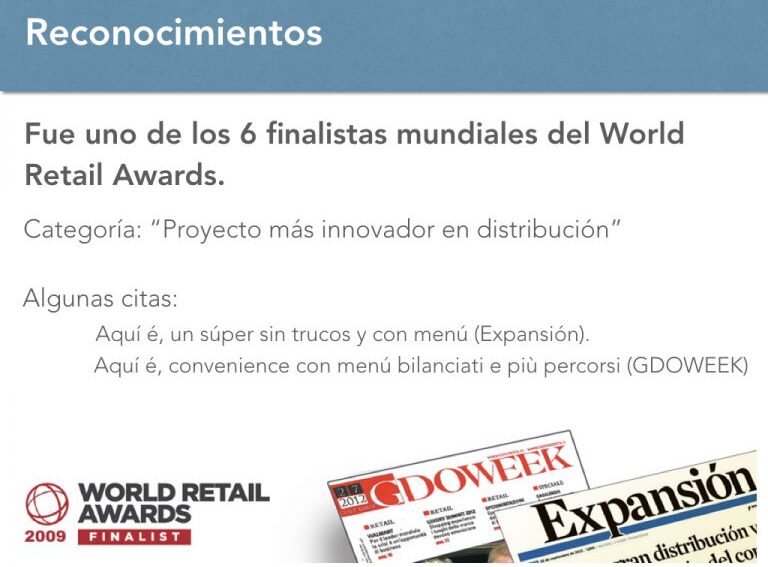ABSTRACT
A product’s packaging is much more than just a wrapper. Suppliers know this and that’s why they put so much effort into its design. But other types of product “packaging” affect the feelings produced in customers, and over which the supplier has no control.
We should understand that a shelf, a section, a store or even a shopping mall are also packagings, and that they are governed or designed by Firms in Retailing (FIRs). Sales depend heavily on the coherence between these overlapping packagings.
____________
It’s 9.15 am on a Tuesday morning. Marta, the Marketing Director, is more than happy as she approaches Vincent, the CEO:
-“Vincent, yesterday we tested the packaging design for the new N2008 coffeemaker, and everything went perfectly. Not only did people really like it, but it also denoted the same values as our brand: glamour, moments of pleasure and a culture of coffee drinking. There wasn’t any major snag.”
-“Well done, Marta. We’ve recently been harvesting the fruits of many years of work, of always taking care of the brand values.”
This conversation could be applicable to Nespresso or any other company, such as Apple, which have been doing exceptional efforts in their packaging design, since it helps greatly in terms of brand building.
.
Whose job is it to design packaging?
In the past, this has been the suppliers’ responsibility, but could you imagine someone gives you a luxury pen, inside its nice box, but wrapped with a supermarket bag?

The shelf is the packaging of the packaging. The section is the packaging of the packaging of the packaging. The shop is the packaging of the packaging of the packaging of the packaging of the product. The commercial area or shopping centre is the packaging…
Product image, even if well designed, can be altered if the product is displayed in a way that is incongruent or non-aligned with its brand meaning.
Ultimately, as I have mentioned many times in my ESADE classes, there is a sort of Russian doll effect in packaging: If the Matryoshkas weren’t properly aligned, then the dolls wouldn’t fit one inside the other.
COMPANIES IN RETAILING
SHOULD DESIGN MORE
PACKAGING THAN SUPPLIERS
Technically speaking, there is a certain amount of awareness discordance, since the various sensations that customers experience might not be coherent –or even contradictory.
As a result, sales might fall, and the brand –which is the main asset of the balance sheet– might depreciate due to the loss of clarity of the brand meaning.
Two practical consequences
The first of these: Retail firms are understanding that packaging design is their responsibility. In Japan, 30% of the cost of a cake sold to the mass market corresponds to packaging; because a cake means a party or celebration and this is expressed through the packaging.
In fact, Retail firms must design more “packagings” than the supplier: the shelves, the section, the store, the shopping experience, the bag, etc.
And the second: It is no surprising that an increasing number of supply companies want to go into retailing, because they want to gain control over the various types of “packagings” that customers have contact with, making sure that they are aligned with their brand.
Lluis Martinez-Ribes
Source: Distribución Actualidad, the spanish magazine of retail
(nº 386, February 2008)





